Lantana Flower Brings Easy Color to Beds and Containers
Updated: Apr. 10, 2024
Discover how to grow vibrant lantana flower for long-lasting color that draws hummingbirds and butterflies like a magnet.
On This Page
Lantana Flower Care and Growing Tips
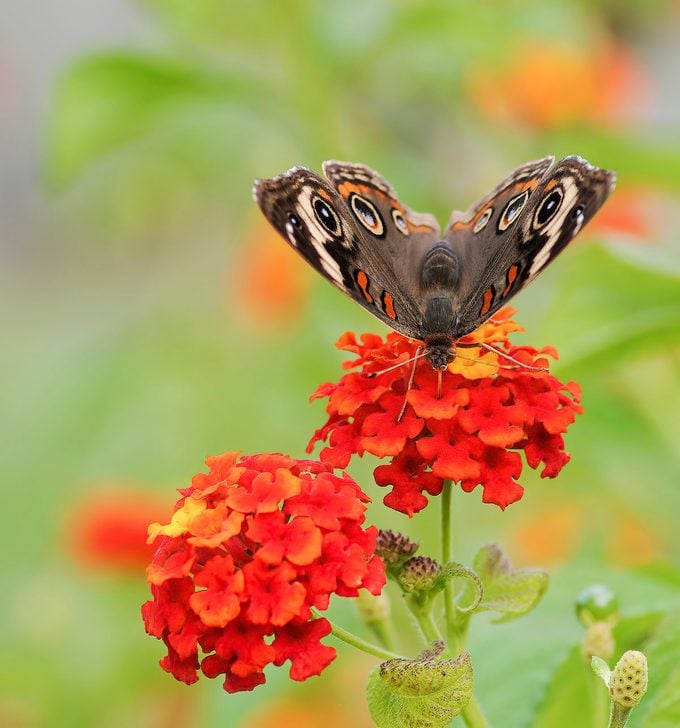
- Scientific name: Lantana camara
- Common names: Lantana, Bush lantana, West Indian lantana
- Growing zones: Perennial shrub in zones 10 to 11, perennial in zones 7 to 9, annual elsewhere
- Native to: West Indies, Central and South America
- Size: 1 to 6 feet high, 3 to 5 feet wide
- Light needs: Full sun
- Water needs: Average, prefers even moisture; drought tolerant once established
- Soil needs: Rich, well-draining soil
Coming in a dazzling array of saturated sunset hues, a lantana flower (Lantana camara) is a no-fuss, easy-care plant that blooms nearly non-stop in full sun.
Is Lantana an Annual or Perennial?
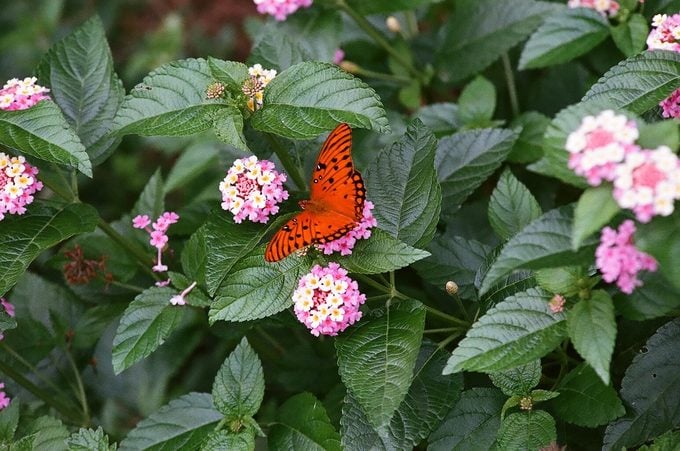
“In mild winter climates, they will grow year-round outdoors,” says horticulturist Noelle Johnson, author of “Dry Climate Gardening.” In these cases, they can reach shrub proportions up to 6 feet tall and 5 feet wide.
“For cooler climates, they make an excellent, warm-season, flowering annual,” she says. As an annual, they usually hover around 1 foot tall and can be used to edge garden beds or as container accents.
It’s possible to overwinter your lantanas as houseplants, too–usher them indoors before temperatures near 28 degrees Fahrenheit, and place near a window in a cool unheated room. The plants will go dormant, so water sparingly, and return them outside when temperatures are reliably over 55 degrees.
If they are perennial in your area, you can multiply your plants with hardwood cuttings in the fall.
Wildlife Benefits
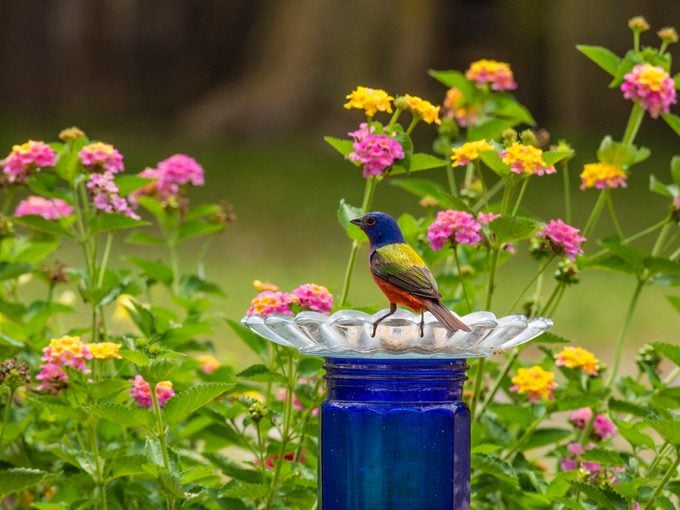
Hummingbirds love their nectar, bees and other beneficial insects adore their pollen, while other birds nibble on their berries. Deer avoid them, and they have few pest or disease issues.
Check out the top colorful hummingbird flowers for your garden.
Lantana Varieties to Grow
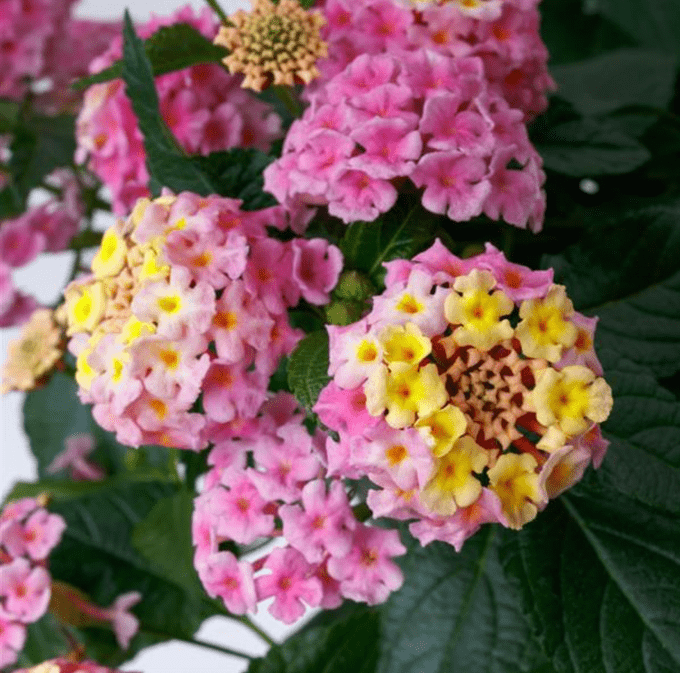
The lantana family keeps growing as breeders add dazzling color combinations to the flowers, boosting qualities like drought tolerance, low seed set, compact habit, and bloom count. There are upright, trailing, and mounding shapes for every garden situation.
‘Bandolista Red Chili,’ with a slightly trailing habit that makes it a natural for hanging baskets or containers has been a favorite in several recent plant trials, according to Greenhouse Product News. ‘Evita Red’ offers a party of red, yellow and orange in each blossom while ‘SunDance Pink’ brings out the softer side in sweet pastels.
Seek out certified sterile varieties like ‘Luscious Marmalade’ and ‘Royale Red Zone’ if you live in humid/wet areas where lantana can be invasive. Noelle also notes the hybrid ‘New Gold’ is largely sterile. As a bonus, without setting seed, they plants will also bloom longer without needing deadheading.
Where and When to Plant Lantana
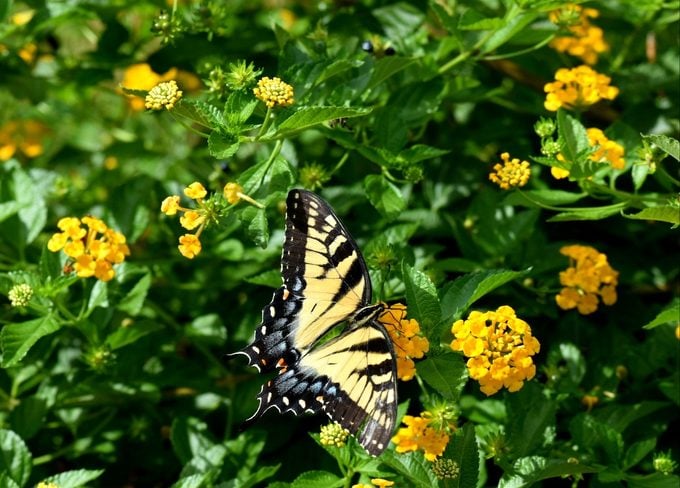
Save your sunniest spot for lantana, which flowers most profusely in full sun, says Noelle.
Lantana are slow to flower from seed, so most gardeners start growing them from small transplants. In warm areas, you can plant lantana in spring. Gardeners in cooler climates should watch for them at nurseries and plant after the last spring frost when temperatures are reliably warm enough.
Pruning and Fertilizing Lantana
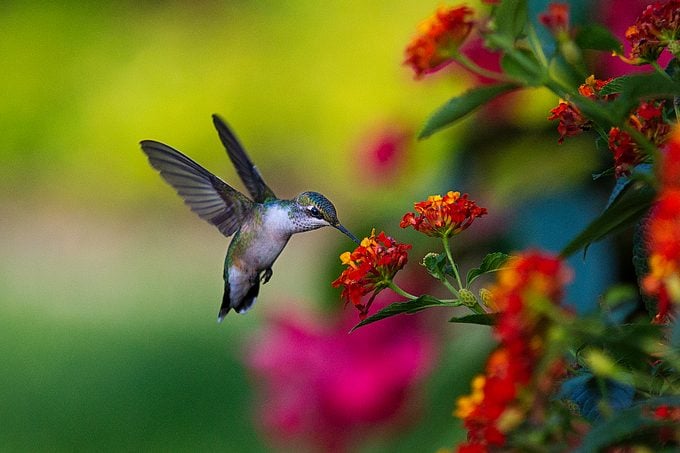
If your lantana grows too lanky, pinch off the top growing points to encourage more lantana flowers and fuller growth. At shrub size, you can even take a hedge shear to them. Pruning can be done anytime, according to Proven Winners.
In-ground plants shouldn’t need fertilizer, but container-grown plants may benefit from a slow-release fertilizer at planting time. Overdoing fertilizer can hamper flower production. Deadheading can encourage new blooms and stop seed-set in non-sterile cultivars.
While unfussy about soil types, their favorite situation is well-draining and rich soil. Lantana prefer to be kept evenly moist but can be drought-tolerant once established. Take care not to let your plants stay overly wet.
Is Lantana an Invasive Plant?
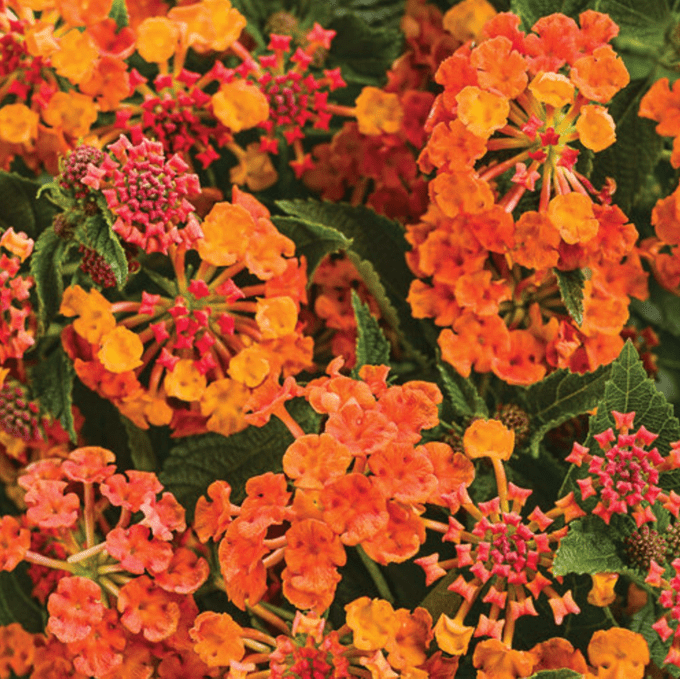
According to the University of Wisconsin-Madison Division of Extension, lantana is considered an invasive weed in Hawaii, several southern states, eastern Australia, the Galapagos Islands, and other islands and tropical areas.
“Lantana camara can self-seed where moisture is present, such as in irrigated gardens,” says Noelle. “In more tropical and humid regions, (the plants) can spread unchecked, spreading by seed. They spread more aggressively in wet, humid and warm locations.”
Noelle says in dry sites, lantana is less likely to roam where unwanted.
If you are concerned about keeping lantana contained within your garden, especially if you live near an open green space, stick with sterile cultivars.
Are Lantana Plants Toxic?
Although birds snack on the berries, lantana’s leaves and berries are toxic if ingested in large amounts and can be fatal for livestock. Among humans, they typically cause symptoms like digestive upset. Noelle also notes, “The foliage of lantana can be mildly irritating to the skin.”
About the Expert
Noelle Johnson, horticulturist and author of “Dry Climate Gardening,” gardens and consults on landscape design in Phoenix, Arizona, and has taught at the Desert Botanical Garden and Tuscon Botanical Garden.
Sources
- ASPCA – Lantana
- Texas Invasive Species Institute – Lantana camara
- Colorado State University – Lantana
- Reuters – Lantana Plant Safe for Toddlers
- North Carolina Cooperative Extension – Lantana
- Proven Winners – Lantana
- University of Wisconsin-Madison Division of Extension
- Gardening Know How – Overwintering Lantana Plants
- Syngenta Flowers
- The National Gardening Association
- Ball Horticultural Company
- Monrovia
Why Trust Us
For nearly 30 years, Birds & Blooms, a Trusted Media Brand, has been inspiring readers to have a lifelong love of birding, gardening and nature. We are the #1 bird and garden magazine in North America and a trusted online resource for over 15 million outdoor enthusiasts annually. Our library of thousands of informative articles and how-tos has been written by trusted journalists and fact-checked by bird and garden experts for accuracy. In addition to our staff of experienced gardeners and bird-watchers, we hire individuals who have years of education and hands-on experience with birding, bird feeding, gardening, butterflies, bugs and more. Learn more about Birds & Blooms, our field editor program, and our submission guidelines.

